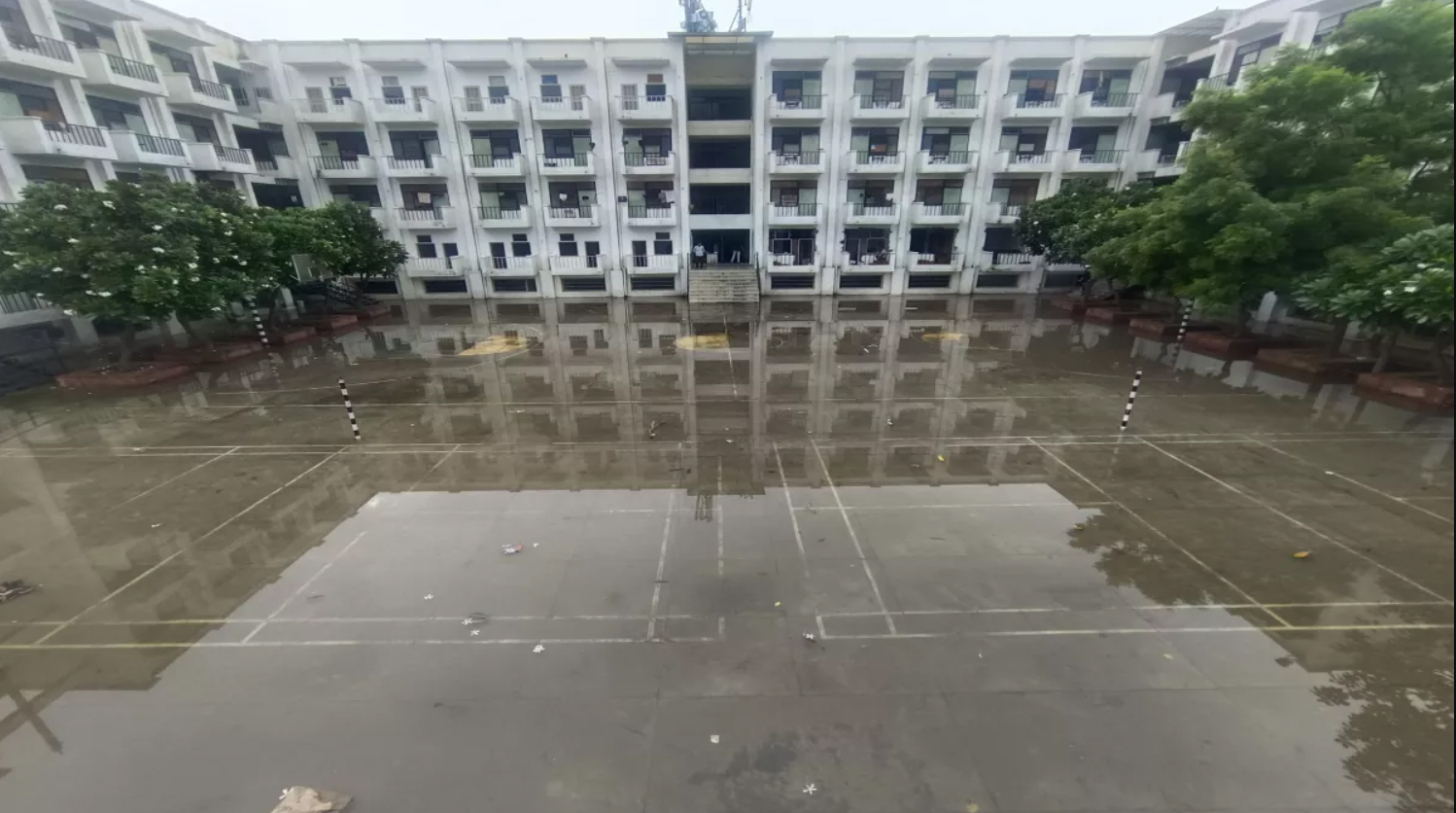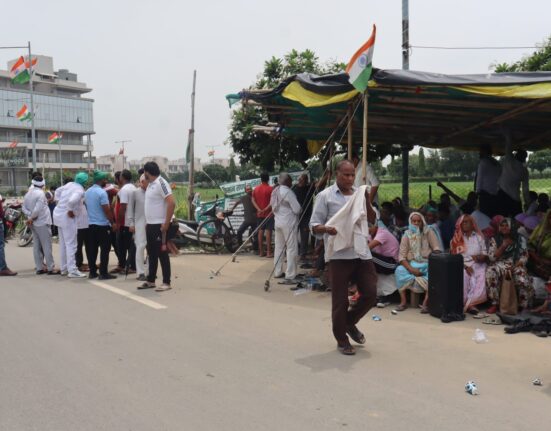Ghaziabad, Uttar Pradesh — A dangerous situation unfolded late Wednesday night at the ABES Engineering College in Ghaziabad after torrential rains caused severe waterlogging in the girls’ hostel. The hostel, a three-storey structure, experienced flooding in its basement following a downpour around 10 PM. Videos circulating on social media showed water gushing into the basement like a waterfall, raising serious concerns about infrastructure safety and emergency preparedness.
Over 50 Female Students Affected
More than 50 female students residing in the hostel were left in a state of panic as water rapidly entered the basement and even made its way into the rooms. Screams echoed through the building as the girls rushed to evacuate. College authorities, upon receiving the alert, deployed water pumps and began evacuation and drainage operations.
Although no casualties were reported, the incident brought back chilling memories of the Rajendra Nagar tragedy in Delhi, where three UPSC aspirants lost their lives in a flooded coaching centre basement just a year ago.
Poor Drainage and Neglected Infrastructure
According to the college administration, the flooding was caused by an overflow of a nearby stormwater drain originating from the industrial area and passing by Crossings Republik toward Greater Noida. This drain handles runoff from 25 municipal wards in the city. However, the drain is reportedly in a dilapidated condition. Although the Municipal Corporation has prepared a Detailed Project Report (DPR) for its reconstruction, actual work is yet to begin.
The presence of a road adjacent to the drain and the lack of protective infrastructure to prevent runoff from entering the college premises have further exposed the vulnerability of the area during heavy rainfall.
Students’ Belongings Damaged
Floodwaters entered multiple sections of the hostel, reaching up to 2-3 feet deep in the basement. Personal documents, study materials, and other belongings of several students were reportedly damaged. One of the circulating videos even shows water filling the inside of hostel rooms, contradicting the administration’s claims.
Questions Raised on College Administration’s Claims
Despite the college management issuing a statement that water from the nearby drain entered the hostel due to high external pressure and was later removed with pumps, several contradictions have emerged:
- Basement Room Controversy: The administration claimed that there are no rooms in the basement. However, social media footage clearly shows water entering what appears to be living or storage areas. This raises the question — if there are no rooms, how did water damage student belongings?
- Lack of Preventive Measures: If the drain near the campus is known to overflow, why weren’t sufficient preventive structures — such as flood barriers or higher boundary walls — built to protect critical areas like the hostel?
- Delayed Response: Social media videos show a delay in administrative response. Why didn’t security personnel or staff stationed within the campus raise the alarm earlier, allowing students to be evacuated before the situation escalated?
Visible Water Stagnation Even After Drainage Claims
While the college has stated that drainage has been completed and no harm occurred, visuals from the campus later in the day tell a different story — open spaces within the premises still showed significant standing water.
A Wake-Up Call
This incident has once again highlighted the gaps in infrastructure preparedness at educational institutions, especially those housing hundreds of students. With increasing instances of extreme weather due to climate change, it is imperative for colleges and civic authorities to work in tandem to ensure the safety of students.
Municipal officials, college management, and local authorities now face growing pressure to act swiftly and transparently, ensuring that such negligence does not result in future tragedies.














Leave feedback about this